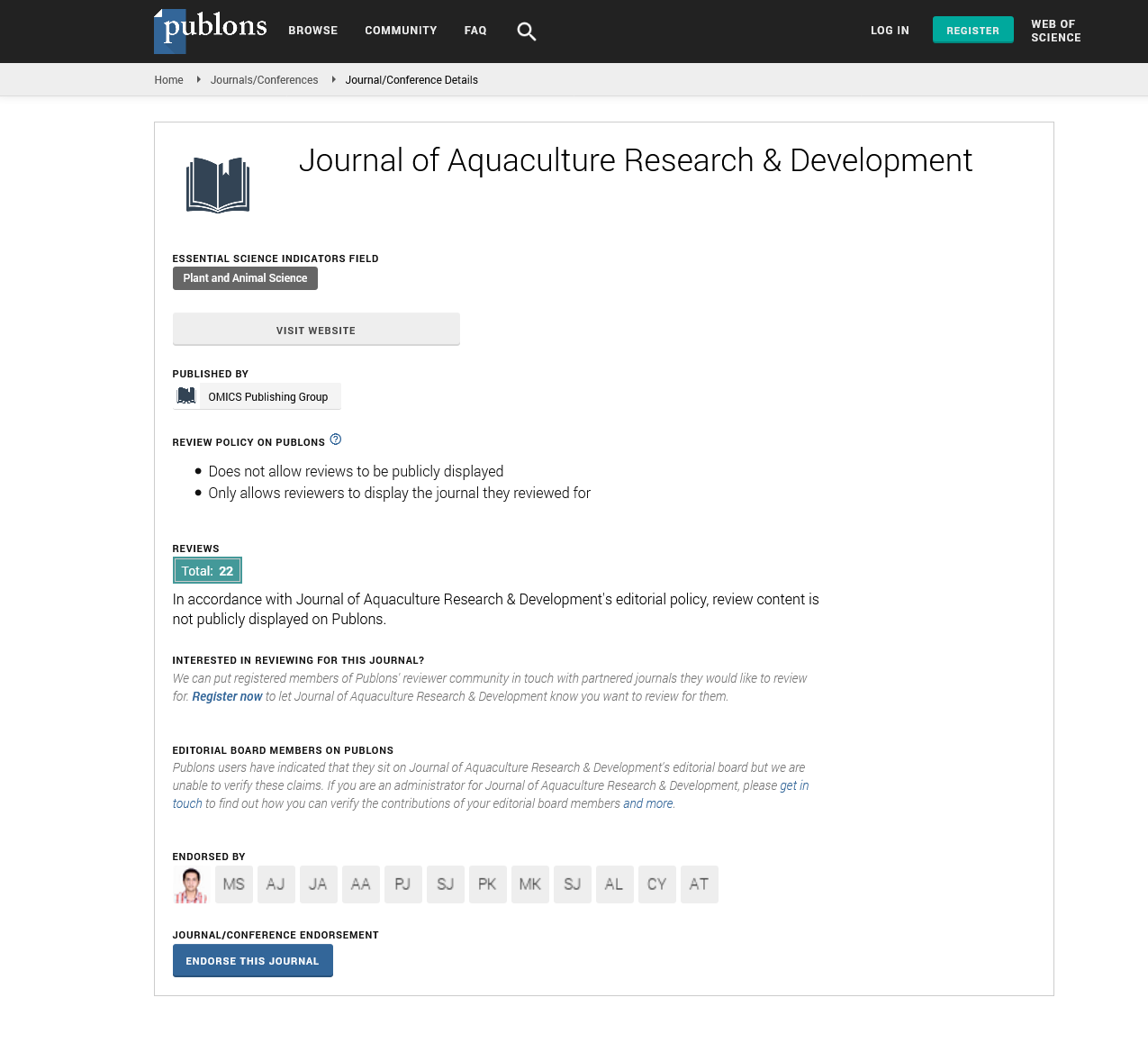Indexed In
- Online Access to Research in the Environment (OARE)
- Open J Gate
- Genamics JournalSeek
- JournalTOCs
- Scimago
- Ulrich's Periodicals Directory
- Access to Global Online Research in Agriculture (AGORA)
- Electronic Journals Library
- Centre for Agriculture and Biosciences International (CABI)
- RefSeek
- Directory of Research Journal Indexing (DRJI)
- Hamdard University
- EBSCO A-Z
- OCLC- WorldCat
- Scholarsteer
- SWB online catalog
- Virtual Library of Biology (vifabio)
- Publons
- MIAR
- University Grants Commission
- Euro Pub
- Google Scholar
Useful Links
Share This Page
Journal Flyer

Open Access Journals
- Agri and Aquaculture
- Biochemistry
- Bioinformatics & Systems Biology
- Business & Management
- Chemistry
- Clinical Sciences
- Engineering
- Food & Nutrition
- General Science
- Genetics & Molecular Biology
- Immunology & Microbiology
- Medical Sciences
- Neuroscience & Psychology
- Nursing & Health Care
- Pharmaceutical Sciences
Opinion - (2022) Volume 13, Issue 1
The Stages of a Sea Urchin's Existence
Rakshitha Kotha*Received: 06-Nov-2021 Published: 27-Nov-2021
Opinion
Sea urchin
White urchins are invertebrates that play an important part in the marine benthic environment as well as having a high monetary value as an aquaculture commodity. Because of the strong demand for high-quality sea urchins during the last three decades, natural sea urchins have been heavily harvested and exploited; as a result of this overharvesting and declining numbers of sea urchins in many nations, sea urchin farming has emerged as a promising industry. The life cycle of a sea urchin is intricate. Male and female sea urchins fertilise and ovulate into the water to complete insemination through in vitro fertilisation. Life cycle
The life cycle of sea urchins is intricate. In vitro fertilisation is a process in which male and female sea urchins fertilise and ovulate into the water to complete insemination. After gametes are fertilised, sea urchins hatch into blastulas, then go through the gastrula stage at 16 hours, the prism stage at 22 hours, the 2-arm pluteus stage at 34 hours, and the 4-arm pluteus stage at 48 hours. UVB radiation has been linked to sea urchin embryo deformities, changes in gene expression, pressure protein expression, and even embryonic cell apoptosis, according to previous research. Currently, proposed explanations for this sea urchin behaviour can be summarised into six hypotheses: defence against natural enemies, reflex behaviour, dehydration prevention, ancillary feeding behaviour, protection against damage from waves and suspended solids in the water, and avoid over-exposure to light. Righting behaviour refers to the sea urchin's ability to shift itself into a normal position with its mouth pointing downward by using its tube feet and spines. When the sea urchin is thrown into an odd position by a predator or a wave, this response helps it to recover and continue to flee. Previous research has found that when sea urchins are exposed to environmental pressure, their pace of correction decreases or their chances of effective correction diminish. As a result, the sea urchin's righting habit can be used to determine whether it is under stress.
Series of sea urchins
Depending on the temperature of incubation, invertebrate embryos develop at varying rates. Researchers employ descriptive phases based on the number of cells and their arrangement in the embryo to compare outcomes between trials. The blastula (central cavity surrounded by an epithelial layer) and gastrula (development of the archenteron) stages of sea urchin embryos are described depending on the number of cells. Prism and pluteus larvae are the two types of feeding larvae, according to morphology.
Formation of a blastula
At the 128-cell stage of sea urchin development, the blastula stage begins. The cells create a hollow sphere around a central cavity, called a blastocoel, in this stage. Because the micromeres have inhibited cell division, all of the cells are the same size at this point. Radial holoblastic cleavage is seen in sea urchins. Both the first and second cleavages are perpendicular to one other and are meridional. The cleavage furrows, in other words, run through the animal and vegetal poles. The animal and vegetal hemispheres are separated by the third cleavage, which is equatorial and perpendicular to the first two cleavage planes. The animal tier's four cells split meridionally into eight blastomeres, each of which has the same volume. Mesomeres are the name for these cells. The vegetable tier, on the other hand, undergoes an uneven equatorial cleavage at the vegetal pole, resulting in four big macromeres and four smaller micromeres. The eight mesomeres divide as the 16- cell embryo cleaves, resulting in two animal tiers, one staggered over the other. The macromeres split longitudinally, generating an eight-cell layer. The micromeres divide as well, though slightly later, resulting in a tiny cluster beneath the main tier. The sixth division's cleavage furrows are all equatorial, while the seventh divisions are meridional, resulting in 128 cell blastula.
Citation: Rakshitha K (2021) The Stages of a Sea Urchin's Existence. J Aquac Res Dev. 12:664.
Copyright: ©2021 Rakshitha K. This is an open access article distributed under the term of the Creative Commons Attribution License, which permits unrestricted use, distribution, and reproduction in any medium, provided the original work is properly cited.

